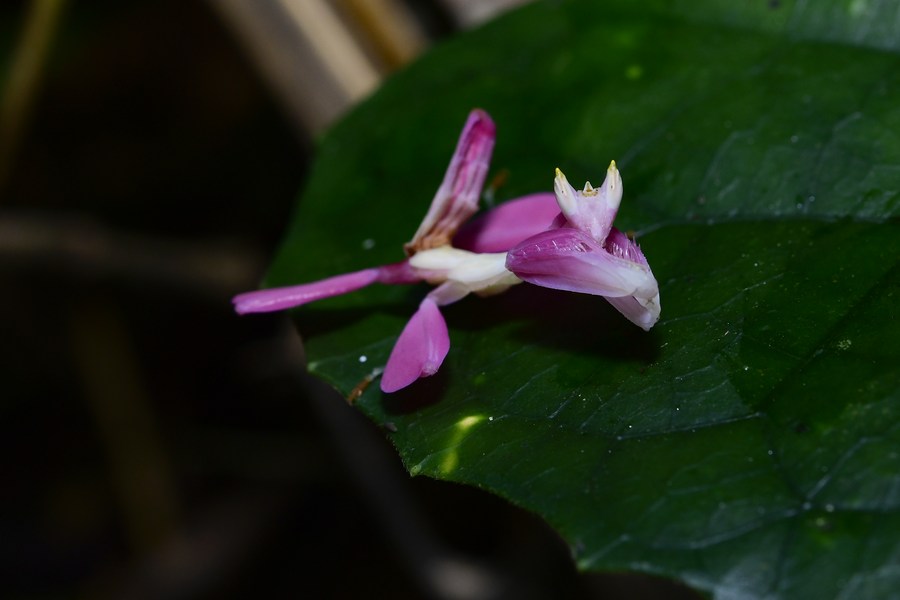
This file photo taken on Dec. 16, 2022 shows an orchid mantis at the Xishuangbanna Tropical Botanical Garden of the Chinese Academy of Sciences in southwest China’s Yunnan province. (Photo by Mo Haibo/Xinhua)
Kunming, Dec. 1 (Xinhua) — Chinese scientists have discovered that orchid mantises, hailed as a classic example of floral mimicry, use their petal-shaped legs to glide.
The study, led by the Chinese Academy of Sciences’ Xishuangbanna Tropical Botanical Garden (XTBG), challenges the long-held belief that these winged legs, or thigh lobes, mimic flowers to attract pollinator prey.
The study was published Wednesday in the journal Current Biology.
In this study, scientists conducted behavioral research and found that orchid mantises are excellent gliders.
„The petal-shaped femoral lobes are similar to wings and serve as an important structure for gliding,” said Chen Zhangqi, head of XTBG’s research team.
This file photo taken on Nov. 5, 2020 shows an orchid mantis at the Xishuangbanna Tropical Botanical Garden of the Chinese Academy of Sciences in southwest China’s Yunnan province. (Photo by Mo Haibo/Xinhua)
Orchid mantises that fall from a height of 10 meters can glide an average of 6.1 meters, and the longest recorded glide reaches 14.7 meters, Chen said.
„These lobes represent the first documented rigid exoskeleton structures that enable gliding, making the orchid mantis the most efficient arthropod gliders known to date,” Chen said.
„With winged legs, the orchid mantis excels at gliding. Camouflaged like a flower, this predator tactic also has this trick,” says a review of the discovery published online in the journal Science. ■

„Oddany rozwiązywacz problemów. Przyjazny hipsterom praktykant bekonu. Miłośnik kawy. Nieuleczalny introwertyk. Student.

